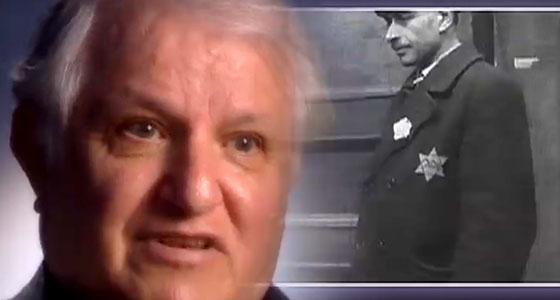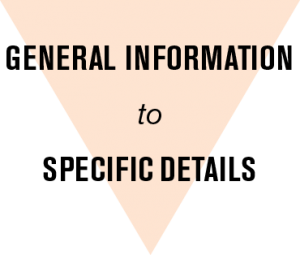FOCUS OF UNIT 2
- Identify events in Canadian history that involved stereotyping directed toward minority groups.
- Recognize that such events involve perpetrators, victims and bystanders
Print the UNIT 2 Lesson Plan as PDF
KEYWORDS FOUND IN GLOSSARY
Print the UNIT 2 Glossary as PDF
MATERIALS
Fact sheets:
“Language not only expresses ideas and concepts, but it actually shapes thought. Language is not simply a reporting device for experience but a defining framework for it.”
– Benjamin Whorf, Linguistic Anthropologist
Unit 2 Lesson Plan
This unit begins with a video and classroom discussion about stereotypes and prejudice. Students then explore the prejudices they see around them, research specific incidents of prejudice from Canada’s history and complete group exercises that look at bias in the press.
Watch

Video Discussion Guide
Ask students to consider and discuss the following questions:
- In this segment, we learn about several individuals who lost their families in genocides. What personal details in their stories make them seem very real to you?
- These survivors suffered terrible losses in their countries of origin. They came to Canada expecting to find a country that was free of racism. Did they?
Connect
Have students consider their own and others’ prejudices
Explain to students that the purpose of this activity is to help them identify situations involving stereotypes and prejudice. They can feel safe because what they write down will not be shared. Students may wish to refer back to their own responses during the activity.
1. Students individually complete the Did You Ever…? worksheet
![]() INDIVIDUAL
INDIVIDUAL
![]() BRAINSTORM
BRAINSTORM
2. Begin a class discussion by asking the following questions:
- Why do you think people “put down” others (e.g., to feel superior, jealousy, fear, lack of knowledge, lack of experience)?
- Where do we learn the behaviours of disrespect (e.g., from peers, families, television, movies, music)?
- How can stereotyping affect whole communities (e.g., create suspicion about minority groups, changes in attitude and behaviour, some groups of people become afraid, opportunity is limited for some groups of people)?
![]() WHOLE CLASS
WHOLE CLASS
![]() DISCUSSION
DISCUSSION
Explore
Research incidents of bias in the media
1. Pre-reading an article: Choose an article from the newspaper or online news that demonstrates bias and discuss with the class.
Characteristics of an Article
The writer of an article creates interest through the title (called a headline in a newspaper) and the first few paragraphs (called a lead). The title is designed to provide an overview of the information contained in the article so the reader will know what the article is about.
The opening paragraphs usually answer the 5WHs – who, what, where, when, why and how. Each of these facts is expanded upon in the rest of the article. The article takes the shape of an inverted pyramid. With the most important and least detailed information at the beginning of the article, the writer hopes to engage the interest of his audience so that they will keep reading.
Bias in an Article
Explain to students that a bias is a particular point of view or opinion that affects the way an article is written. For example, a police officer might have a different bias than a teenager on the subject of treatment of youth by the judicial system. Bias comes from the observations and experiences of each person. Often people don’t realize that they have a bias. Writers of articles try to present information factually and without bias, although they may not always be successful.
![]() WHOLE CLASS
WHOLE CLASS
![]() DISCUSSION
DISCUSSION
2. Have students research a specific incident of prejudice or hate
- Divide students into groups of three to five students.
- Each group will have 15 minutes to learn as much as possible about an assigned topic. They can do this research using only the Fact Sheet (included in this unit) or they can visit the school library/computer lab or move among class stations that you have set up for them.
- Distribute the Graphic Organizer and have members of the group record their information. Each group will answer the following questions about their research:
- When did this happen?
- Where did this happen?
- What minority group was being oppressed?
- Who/what group was the perpetrator?
- Who/what group was the victim?
- Were there any bystanders?
- What happened?
- Do you think that bigotry was involved? Or intolerance? Prejudice? Stereotyping? Oppression? What in the report indicates this to you?
3. Pre-production: Reporting the news on television and/or radio
Explain to students that they are going to create a radio or television newscast based on their research topic and that these activities focus on understanding some features of how the news is put together and communicated.
Before the students begin to put their newscast together, they will need to spend some time looking and listening to newscasts on television and radio. With teacher guidance, the features of television and radio newscasts are introduced, drawing from students’ observations.
![]() SMALL GROUP
SMALL GROUP
![]() RESEARCH
RESEARCH

Evaluate
Have students apply what they’ve learned through role play
1. Reporting the news – Pre-production exercise
Discuss the instructions below before the students begin to work.
As you watch the television news or listen to news on the radio, record the following information about some of the features of newscasts. This information will be needed when your group prepares its own newscast!
- The first story reported is called a LEAD story. Jot down everything you notice about the lead story, including how it is treated differently than the stories that follow. Why do you think this story was chosen as the lead story?
- On television, the news anchor introduces all the stories reported. Write down all the things you notice about the news anchor and about his/her role in the newscast. Your observations might include what the anchor is wearing, how s/he creates viewer interest in the story and anything else that you find striking.
- On radio, the news anchor introduces and even reports on some stories. How does the anchor get your attention? How does he/she keep your attention?
- What are the features of a typical lead story on television or radio? For example, are there interviews with victims, bystanders/witnesses or other people at the scene? What other features do you notice? What else is reported? How many different points of view about what happened were heard?
- How did a particular news story make an impact on its audience? What techniques were used?
2. Distribute and discuss the evaluation criteria before the students begin to work.
Your group is a news team. You will present your news story based on your research topic. Your target audience will include individuals from different cultures and ethnicities. You want to report what happened, but you also want to take a position about what happened (e.g., a sad part of Canada’s history, inconsistent with the values of a democratic society, etc.). Remember that your news report must include a reporter, victim(s) and bystander(s)/witness(es).
![]() SMALL GROUP
SMALL GROUP
![]() PRESENTATION
PRESENTATION
Debrief and Consolidate
Encourage students to reflect critically about their experience both as members of a news team and as part of the audience listening to other news teams report their stories. Some of the following questions may be helpful:
- How did you feel reporting these events?
- How did you feel hearing about these events from other news teams?
- Why do you think these kinds of events take place in Canada?
- How might they be prevented?
Teaching Consideration
Make sure that students are prepared to work cooperatively and that you have reviewed the need to listen respectfully and to speak kindly to each other. Remind students that trust is built on the confidence that what is shared will be confidential.
![]() WHOLE CLASS
WHOLE CLASS
![]() DISCUSSION
DISCUSSION
Please see the Curriculum Connections page for the evaluation criteria addressed in this unit.
